Photo by Roger Smith
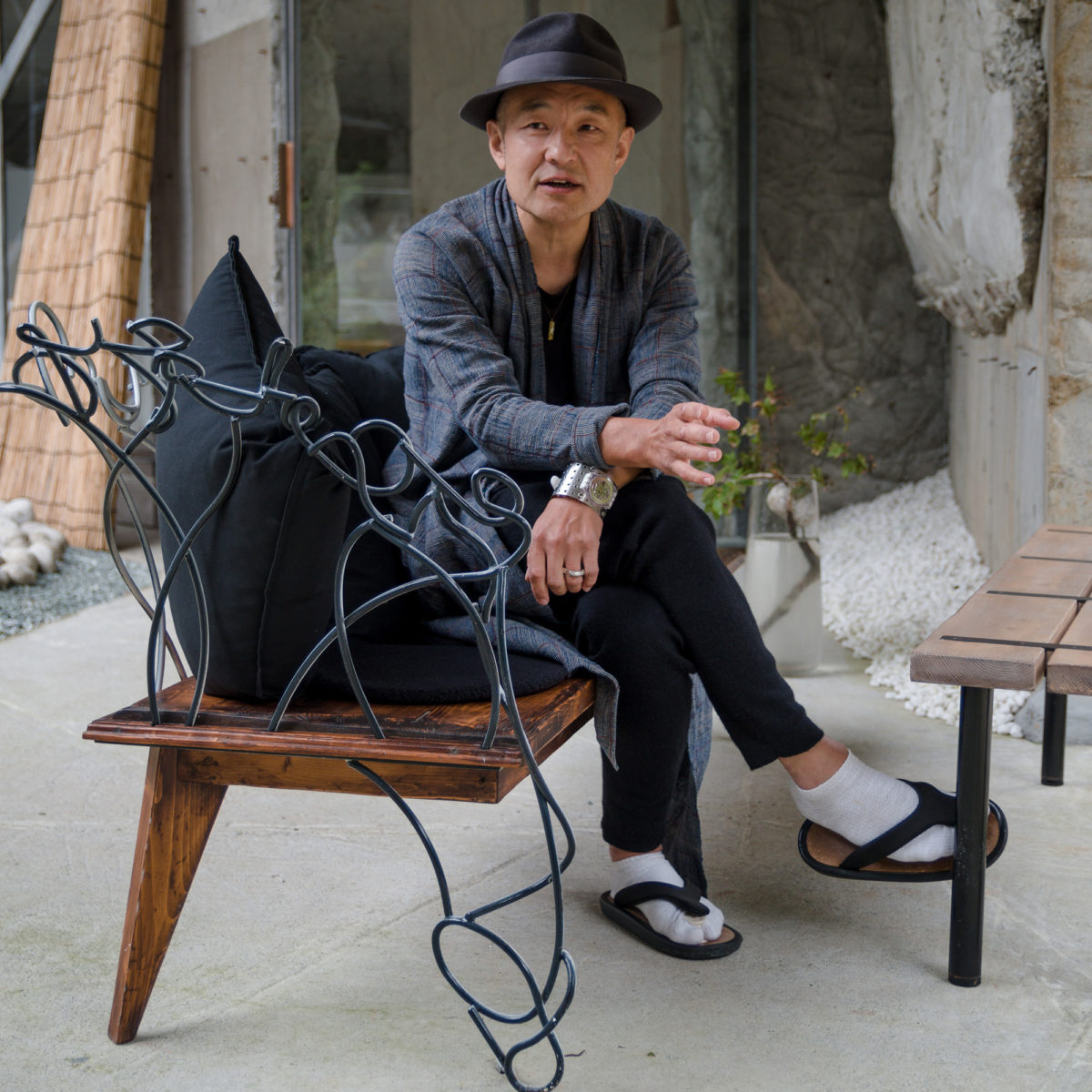
Photo by Roger Smith
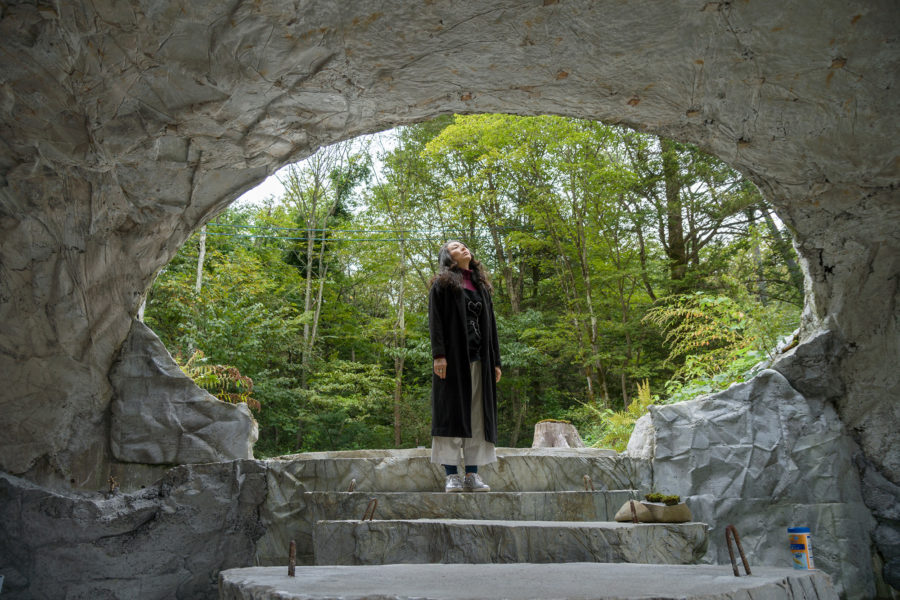
Photo by Roger Smith
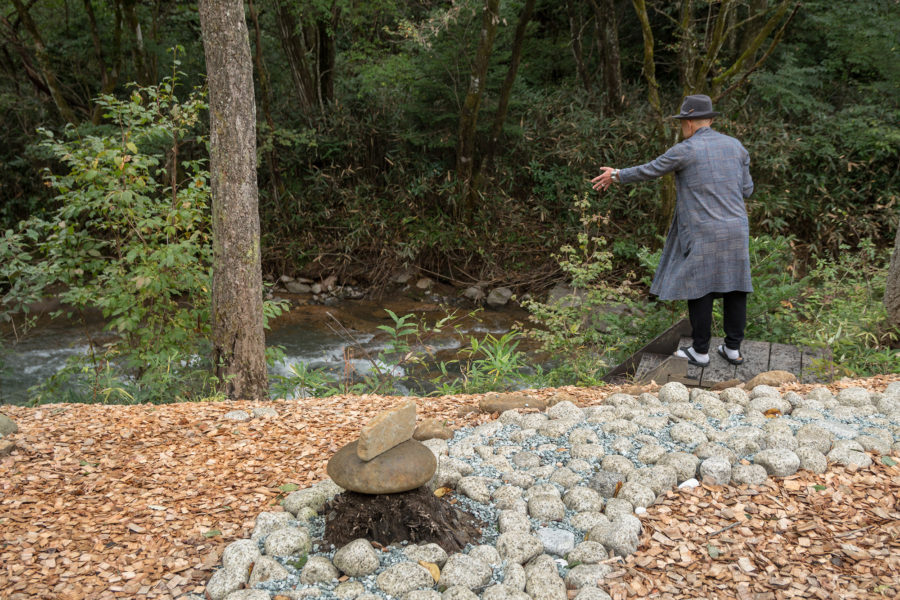
-
At first glance, Ogata Yama resembles a white hill. A cave made from concrete. A crash-landed spaceship being reclaimed by forest. Ogata Yama is so full of character it almost defies characterization. Its structure is cleaved into two halves, with a home and showroom on one side and a cafe on the other. In the middle is a circular atrium formed around a single towering tree. A bench faces a clear river, waiting for a visitor to come for contemplation or a nap.
-
Roger Smith

Ogata Yama (lit. “Ogata’s Mountain”) is a fitting name, for this is a world unto itself. Designer Kin’ichi Ogata and wife Ayako Ogata set out to build a new home in the foothills of Mount Izumi when their house by Sendai’s coast was lost in the 2011 tsunami. More than just a dwelling, it took them nearly a decade to create this place that would inspire themselves and others.
Roger Smith
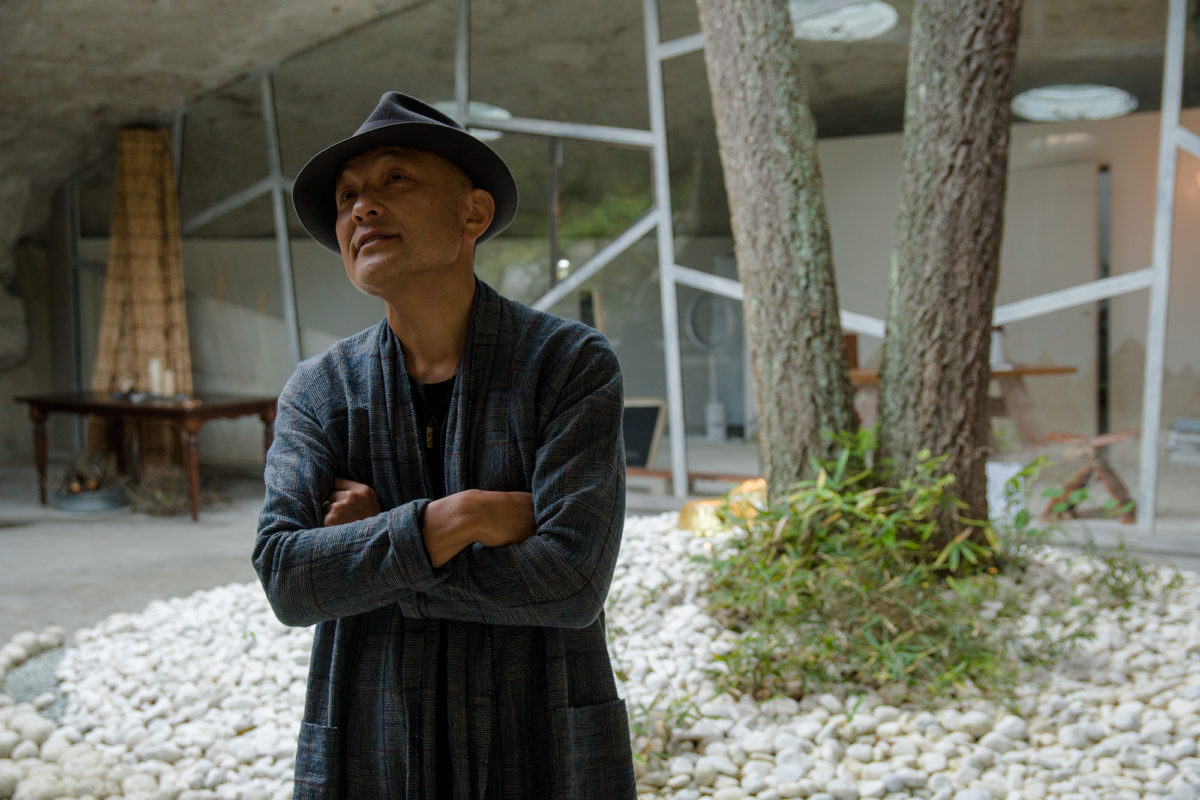
They decided to build a home in the shape of a low hill so as to become a part of the natural environment. Ayako laughs as she says, “The animals don’t mind it at all. A little while back we had a lot of kamoshika (Japanese goat-antelopes) come through in the morning to get a drink of water.”
Roger Smith
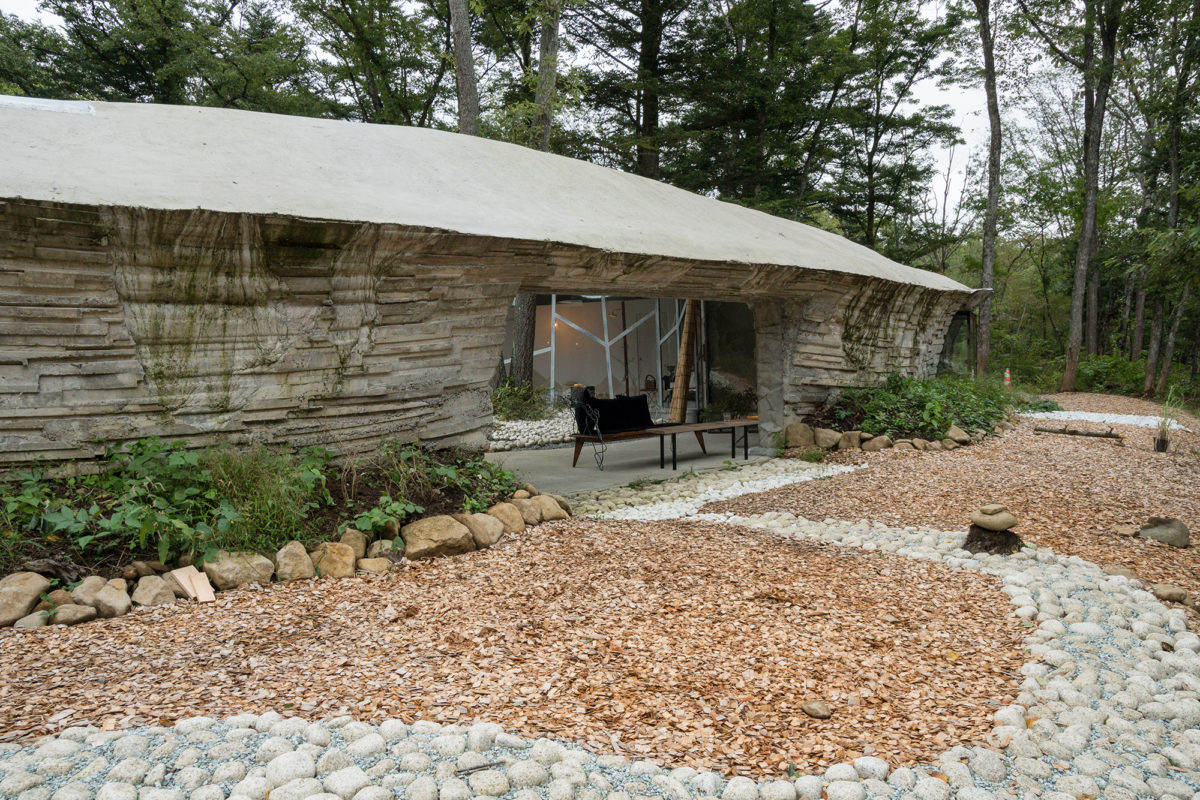
Next door is their small factory and design studio, Ogata Inc. Kin’ichi Ogata and his brother Hisashi founded it in 1998. Here, they and fifteen employees do architectural design, graphic design and create art furniture. Kin’ichi has traveled internationally to exhibit their creations at design fairs including the prestigious Maison et Objet in Paris. However, with Ogata Yama, he decided that rather than exhibit, he would create a destination for people around the world to visit.
Roger Smith
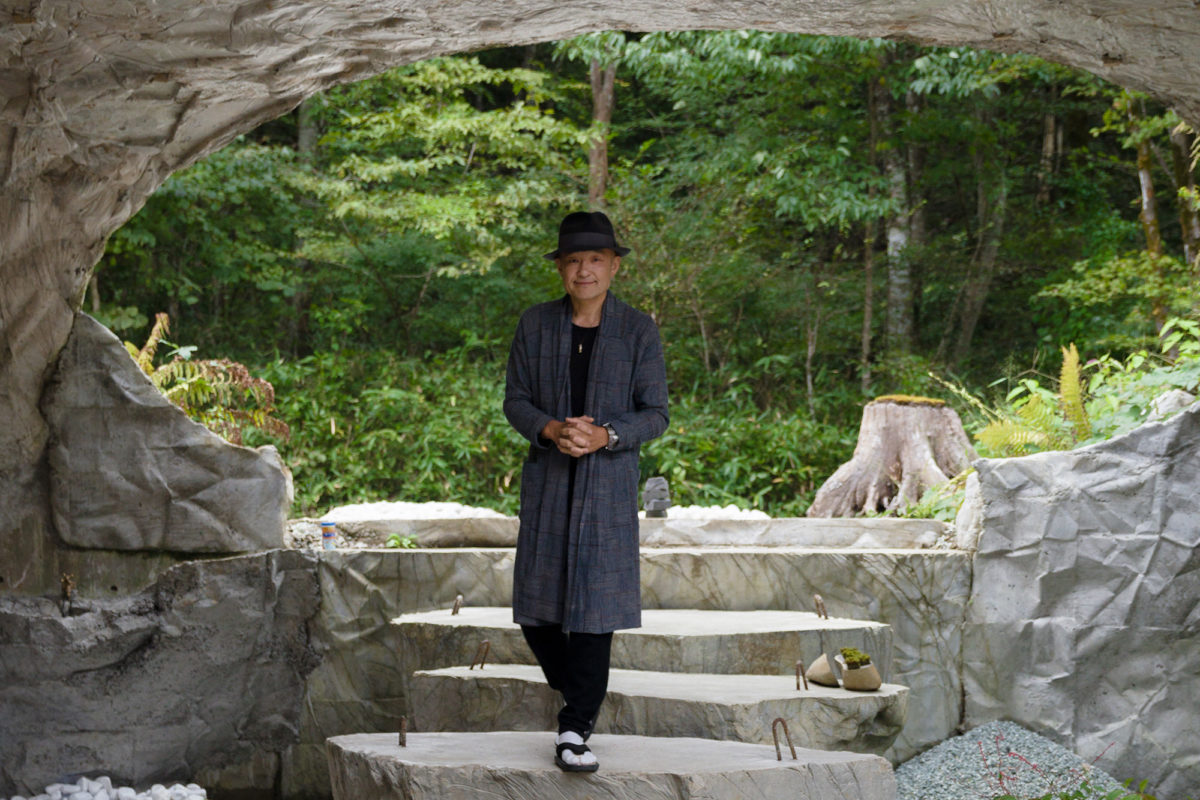
“I wanted to make a gallery and also a home,” Kin’ichi explains, “But just explanations and stating a concept wouldn’t work. We needed something you can feel on an instinctual level, that resonates in your heart, that you can enjoy without explanation.”
Roger Smith
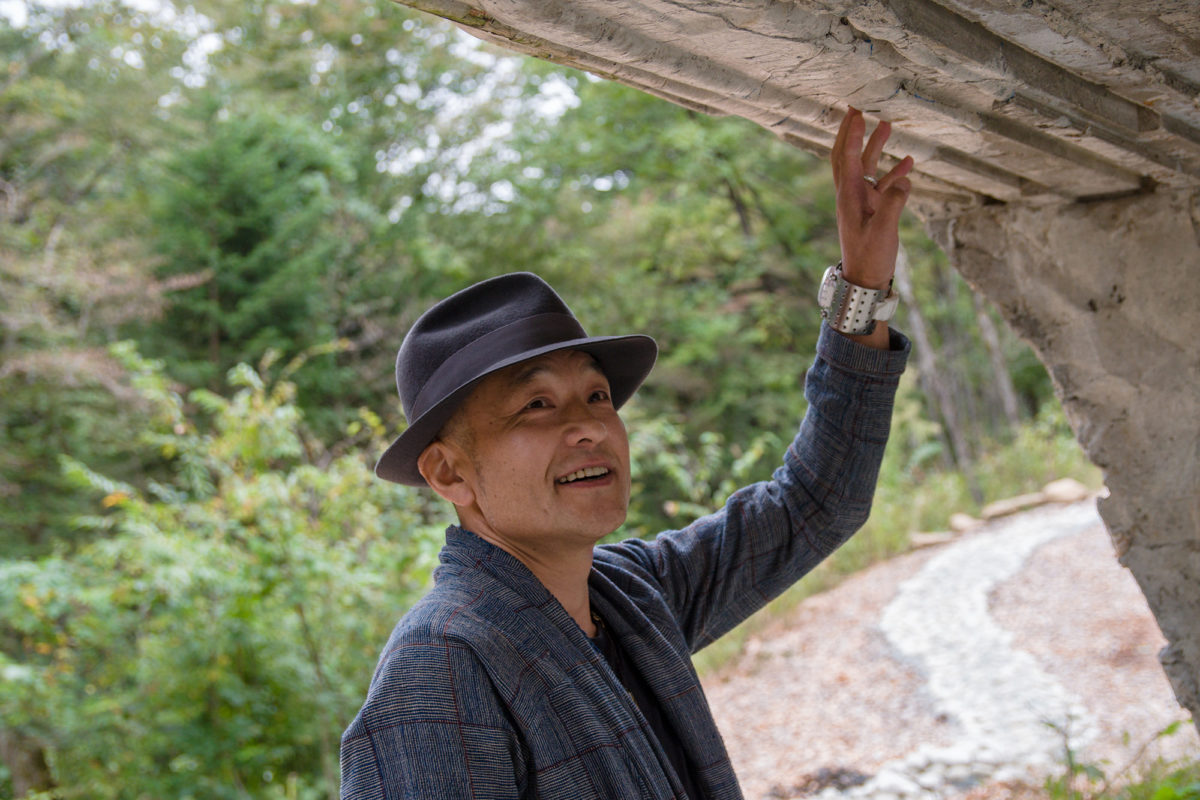
Ayako recalls, “Kin’ichi says there’s nothing more stimulating than the changing natural world. Ogata Inc. has been here for fourteen years and the surroundings have never been the same twice. The best time is spring when you can feel the changes with each passing hour.”
Roger Smith
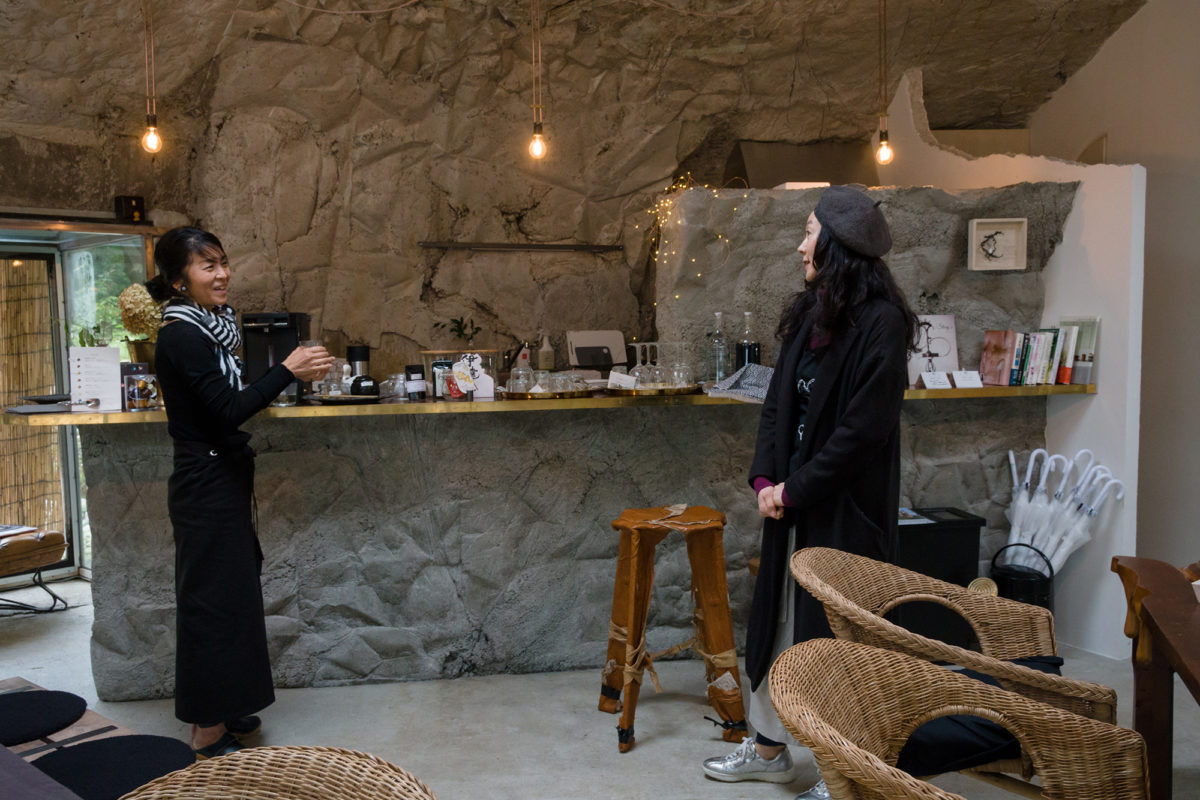
Ogata Yama opened in July 2019 and is part design showcase, part architectural curiosity, part cafe, and part dwelling. The concrete dome embodies their no-waste ideal—close observation shows scraps of blue tarps, leaves, and woodchips embedded in the concrete. Examining the walls feels like an archeological expedition, telling the story of this site and the company.
Roger Smith
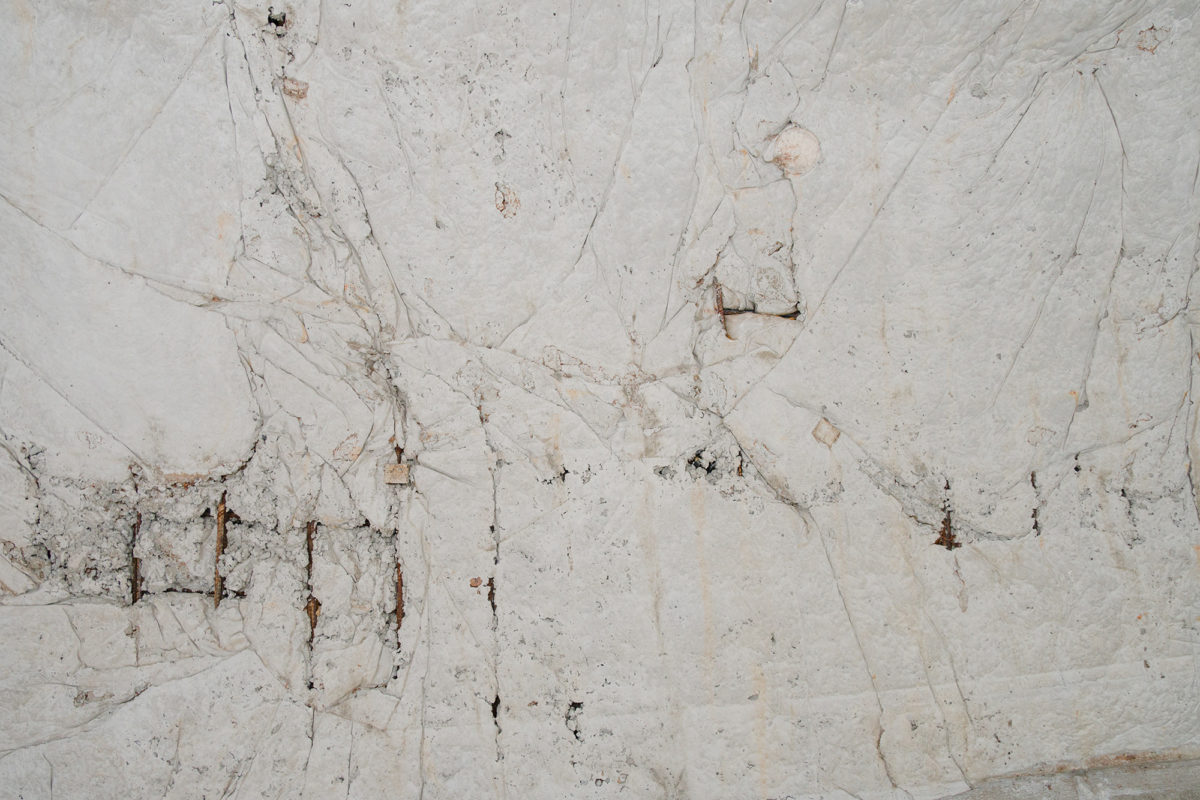
The products on display are clever in both concept and construction. In the cafe sits a ragged chair which looks like a torn cardboard box. In an ironic twist, it is actually made from expensive leather and is completely stable to sit on. Normally, wood is hard and unforgiving, but Ogata figured out how to give a wooden chair a suspension system, letting the user sink into supportive wooden tiles. Visitors are encouraged to try these creations for themselves on the cafe-space side, and look through the window at the showroom on the other side, which doubles as the Ogatas’ residence.
Roger Smith
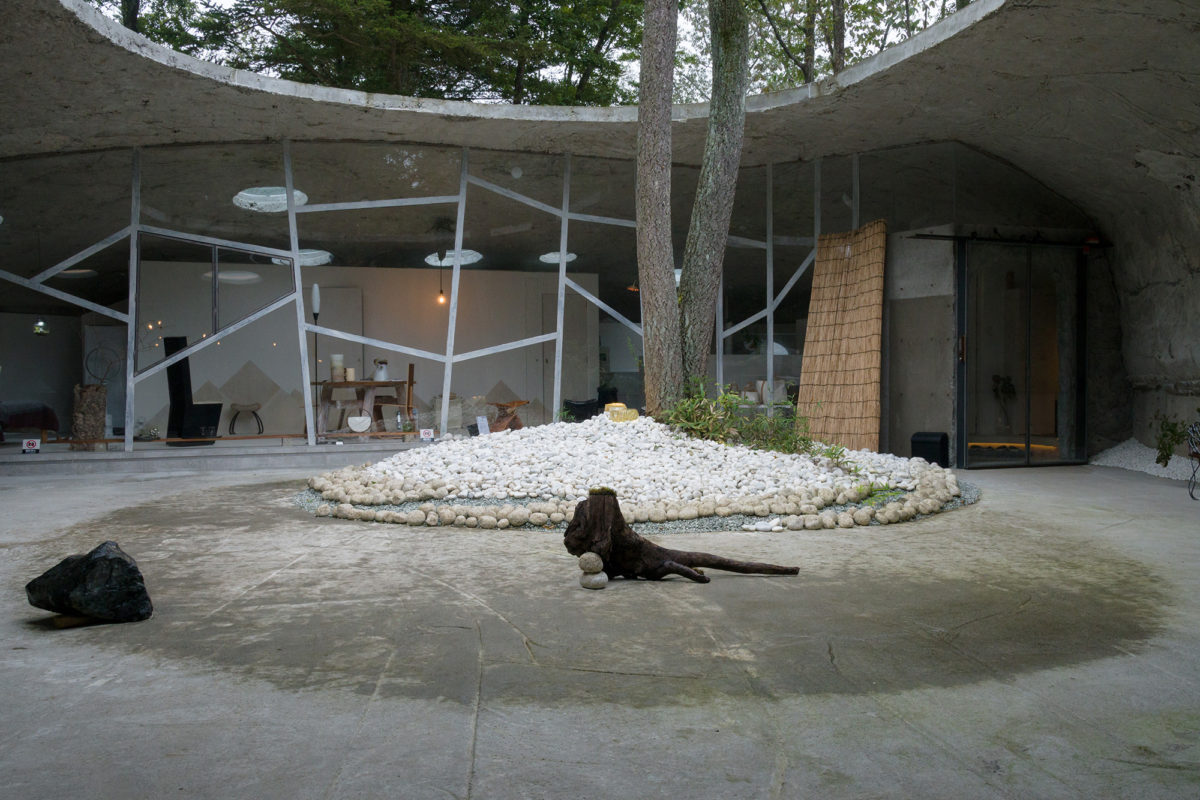
Ogata Yama is a place to find inspiration rooted in Miyagi’s natural landscape. You can sit in solitude, sipping tea while listening to sounds of the forest. Or take a seat in the cafe space and interact with fellow creative types seeking inspiration from nature. In the future, the Ogatas hope to do musical events, and even special stays where people can enjoy the stars and moonlight.
Roger Smith
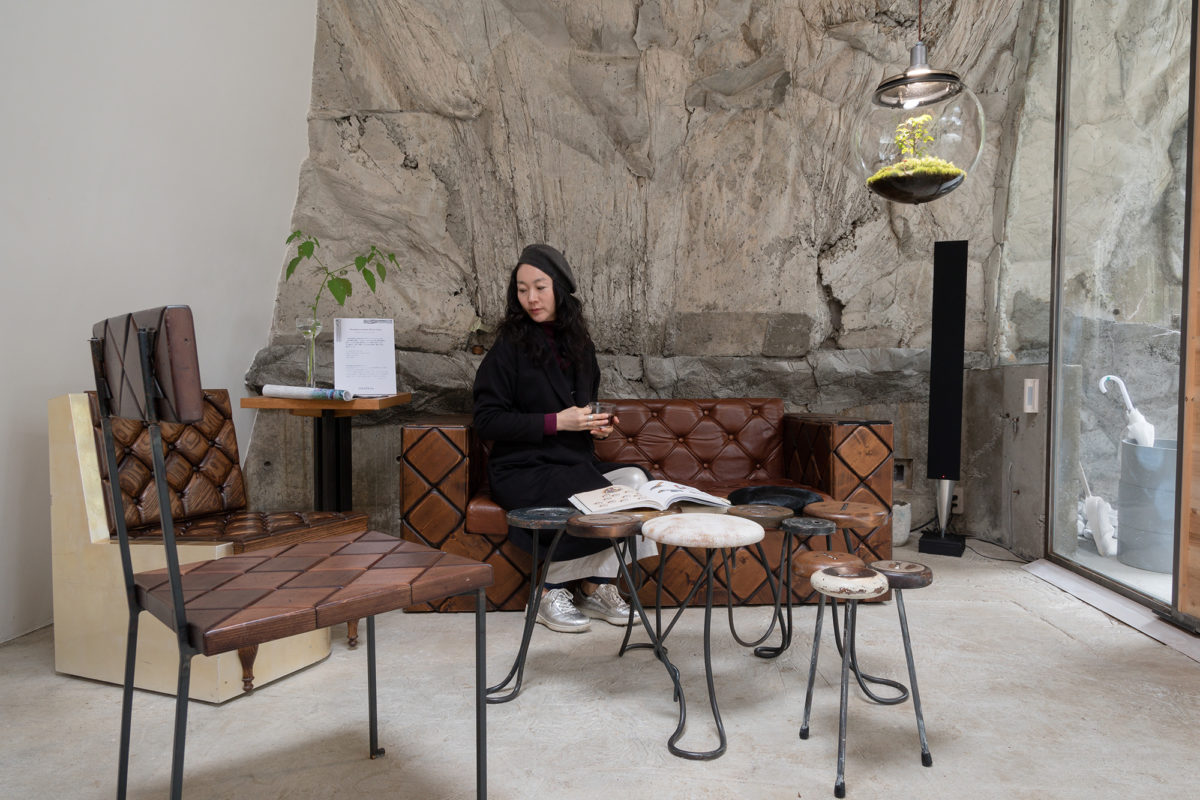
To preserve the experience, the number of guests at one time is limited and reservations are required. There are 2.5- and 7-hour time slots available. Short stays include free tea service (and sweets if it’s a rainy day), while long stays includes tea and sweets, plus lunch.
Ogata Yama is part of a movement where creators are rediscovering and finding inspiration in Miyagi’s natural landscape. In northern Miyagi’s Tome City, the Noh Stage in the Forest, designed by world-famous architect Kengo Kuma, returns Noh theater to its primal roots with a stage built from local timber and surrounded by forest. In neighboring Kurihara City, the Kaze no Sawa Museum is a contemporary art museum with outdoor artworks dotting its expansive grounds and an indoor gallery space housed inside a traditional two-hundred-year-old residence. Miyagi also hosts a biennial Reborn Art Festival that turns Ishinomaki City and the sparsely inhabited Oshika Penninsula into a large-scale art space.
-
Last Update
March 18, 2020 -
WEBSITEhttps://ogata-japan.com/
-
Sendai
Tags





